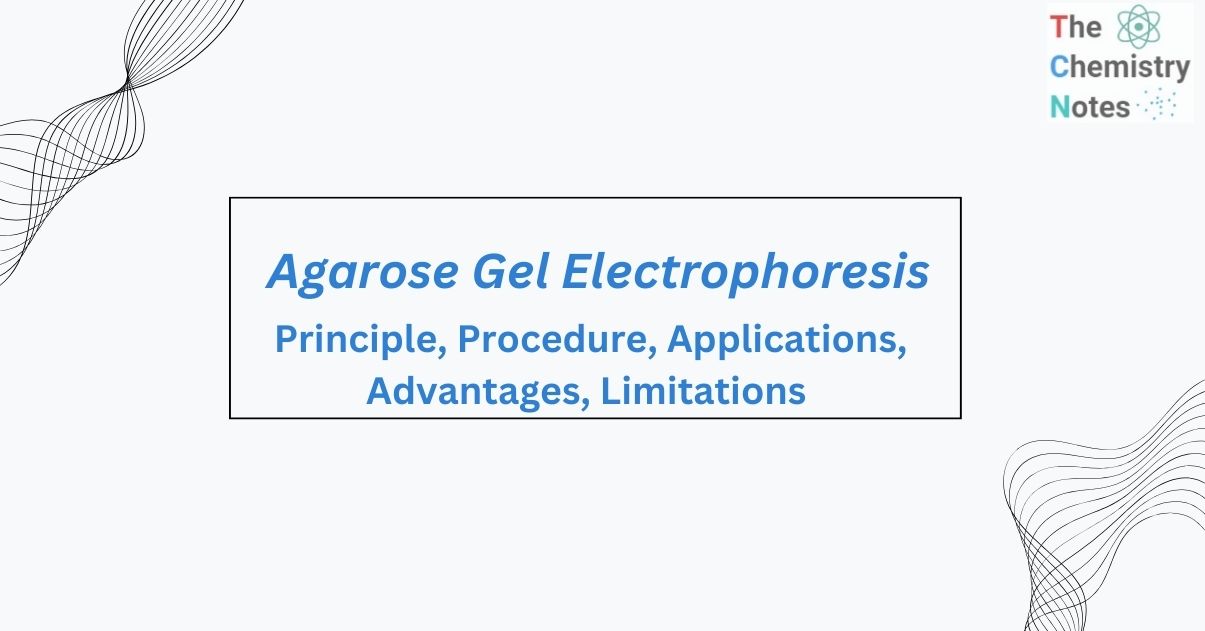
Agarose gel electrophoresis is a type of electrophoresis used to separate nucleic acid (DNA or RNA) fragments by size.
Agarose gel electrophoresis is the most efficient method for separating DNA fragments ranging in size from 100 bp to 25 kb1. Agarose is made up of repeating agarobiose (L- and D-galactose) subunits and is extracted from the seaweed genera Gelidium and Gracilaria. During gelation, agarose polymers create a network of bundles whose pore widths control the molecular sieving capabilities of the gel.
What is Agarose gel electrophoresis?
Agarose gel electrophoresis is a type of electrophoresis used to separate nucleic acid (DNA or RNA) fragments by size.
The most common application of agarose gel electrophoresis is to separate mixtures of DNA fragments of varied sizes, generally following restriction enzyme digestion or PCR. However, the presence or absence of secondary structures, such as those present in plasmids with various degrees of DNA supercoiling, impacts the rate of migration during agarose gel electrophoresis.
Principle of Agarose gel electrophoresis
The DNA is placed into pre-cast wells in the gel and a current is supplied to separate it using agarose gel electrophoresis. Because the phosphate backbone of the DNA (and RNA) molecule is negatively charged, when placed in an electric field, DNA fragments move to the positively charged anode. Due to the constant mass/charge ratio of DNA, DNA molecules are separated by size inside an agarose gel in a pattern such that the distance traveled is inversely proportional to the log of its molecular weight.
Agarose gel electrophoresis has a high resolving power while remaining straightforward to operate. The agarose gel is made up of small pores that function as a molecular sieve, separating molecules based on charge, size, and shape. These factors, together with buffer conditions, gel concentrations, and voltage, influence molecular mobility in gels. The agarose gel’s sieving qualities determine the rate at which a molecule migrates. Smaller molecules move through the pores of the gel more easily than bigger molecules, resulting in separation.
Reagents used in Agarose gel electrophoresis
EtBr
Since DNA cannot be seen with the naked eye, an intercalating dye such as ethidium bromide (EtBr) is introduced into the gel during the setting process. This attaches to the DNA and fluoresces when exposed to UV light, allowing the DNA fragments to be seen. The band becomes brighter as DNA concentration increases.
EtBr is the most commonly used reagent for staining DNA on agarose gels. When exposed to ultraviolet light, electrons in the ethidium molecule’s aromatic ring are activated, resulting in the release of energy (light) as the electrons return to their ground state. EtBr interacts with the DNA molecule in a concentration-dependent manner. This enables an estimate of the amount of DNA in each particular DNA band based on its intensity. Because of its positive charge, EtBr lowers the rate of DNA migration by 15%. Because EtBr is a suspected mutagen and carcinogen, caution should be taken when handling agarose gels containing it.
Buffer
Buffer helps deliver the electric current through the gel. During agarose gel electrophoresis either T BE or TAE are used as buffer.
– TBE buffer is made with Tris/Boric acid/ EDTA and TAE buffer
Tracking dye
The sample also contains a dye such as bromophenol blue, Xylene cyanol, or orange dye. It improves the visibility of the sample being added and also serves as a marker of the electrophoresis front. is made with Tris/Acetic acid/ EDTA.
Procedure of Agarose gel electrophoresis
- Firstly, DNA samples are applied to the wells of agarose gel along with the tracking dye.
- The wells are filled with buffer solution and current is supplied.
- As DNA backbones contain negatively charged phosphate groups, they are attracted towards the positive electrode.
- Smaller DNA molecules travel faster than the larger ones.
- The DNA in the gel is stained and visualized using the fluorescent dye ethidium bromide “EtBr,” which emits orange light after attaching to DNA.
Factors which affect the rate of migration of nucleic acids in Agarose gels
Different critical parameters primarily determine the rate of nucleic acid migration in Agarose gels. They are:
a. Concentrations of agarose
Lower molecular weight DNA and RNA fragments are separated using higher concentration gels, and vice versa.
b. Molecular weight
The migration rate of a duplex DNA fragment is inversely proportional to the log Molecular weight. A straight line is obtained when logM.W is plotted against mobility.
c. Conformation
The fastest-moving DNA is supercoiled DNA, followed by linear and relaxed open circular forms.
d. Voltage used
At low voltage (5V/cm), the rate of migration is precisely proportional to the applied voltage. When the voltage was increased, however, the mobility of high molecular weight DNA fragments increased differentially.
e. Temperature and composition of the base
The base composition and running the gel at temperatures ranging from 4 to 30 degrees Celsius do not affect the mobilities.
Applications of agarose gel electrophoresis
- It is used in medical diagnosis to identify genetic alterations linked to disorders such as sickle cell anemia and cystic fibrosis.
- It is frequently used for DNA and RNA analysis in a variety of applications such as PCR, DNA sequencing, and RNA isolation.
- The method can be used to separate DNA fragments based on their size, which is necessary for downstream applications like cloning and gene expression research.
- It is used in forensic analysis to identify DNA samples from crime sites.
Advantages of Agarose gel electrophoresis
- Agarose gels are simple and quick to make.
- Agarose gel electrophoresis has a high resolving power.
- Most applications require simply a single-component agarose and no polymerization catalysts.
- The samples are also recoverable.
- The gel is simple to pour and will not denature the samples.
Limitations of Agarose gel electrophoresis
- Gels can melt during electrophoresis,
- Various types of genetic material can run in unexpected manners.
References
- https://faculty.ksu.edu.sa/sites/default/files/agarose_gel_electrophoresis.pdf.
- https://rlacollege.edu.in/microbiology/3-class-agarose-gel-rdtclass%20(PD).pdf
- https://www.tutorialspoint.com/agarose-gel-electrophoresis-definition-principle-steps-and-uses.
- https://people.bu.edu/mfk/restricted566/electrophoresis.pdf.
- https://www.technologynetworks.com/analysis/articles/agarose-gel-electrophoresis-how-it-works-and-its-uses-358161
